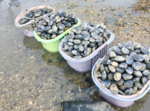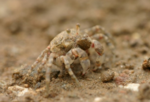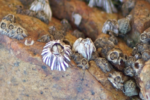GGHS 2019 Winter - Team 7
Write introduction about topic here.
목차
Team
| No. | Team Topic | Teacher | Role | Name (Korean) | No. of Students |
|---|---|---|---|---|---|
| 7 | Renewable Energy and Environmental Protection (신재생에네지와 생물보존) |
Marianna PEROVA | Leader | 안서연 | 8 |
| Vice-Leader | 제서○ | ||||
| 박수○ | |||||
| 이호○ | |||||
| 오서○ | |||||
| 신혜○ | |||||
| 한가○ | |||||
| 박유○ |
Topic: Renewable Energy and Environmental Protection.
Introduction
Motivation and Purpose of the research
Expectancy Effects
Body
Field of Renewable Energy
Renewable Energy
Definition of Renewable Energy
Renewable energy is environmentally friendly energy that can be used by changing existing fossil fuels or converting renewable energy.
Sort of Renewable Energy
Photovoltaic Energy Generation
Photovoltaic energy refers to light energy coming from the sun, and refers to energy using solar cells that convert solar light energy into electrical energy using photoelectric effect. It is a more advanced way in solar power technology that uses solar heat directly for heating. Solar power generation is a way of generating electricity by converting sunlight into direct current. Solar power uses solar panels with several solar cells attached. As demand for renewable energy increases, production of solar cells and photovoltaic arrays is increasing.
Tidal Barrage Generation
The principle of tidal barrage generation is generally to turn the generator by closing the floodgate and then opening the door, using the force of water spilling. The fall is usually less than 10m, smaller than the fall from the hydraulic power. There are only a limited number of countries that have tidal resources because the tidal difference is only available in large areas with large capacity reserves. In particular, Korea's west coast has various sizes of bight, and due to its large geographical features, it is considered a good place to develop tidal energy. Tidal power is a clean energy source with low power costs and no pollutants. In addition, they are in the spotlight because their energy sources are unlimited and infinite. Its major advantage is that it can produce electricity twice a day without being affected by weather conditions. It is the only renewable energy source that can be predicted over the long term. That's because tide phenomenon is a regular and accurate long-term forecast because it is caused by regular celestial movements.
Biomass Energy Generation
Bioenergy is energy that uses biomass. Biomass is the most used energy source in the world until the 19th century, when trees were the main energy source. Currently, about 10 percent of the world's primary energy consumption comes from biomass. When biomass is heated with a small amount of oxygen, a medium gas is produced. The gas can be purified and used to produce heat and electricity through a cogeneration generator. If biomass is heated to a high temperature of 500°C with the air completely cut off, heat decomposition occurs. Heat decomposition produces bio oil, gas, and charcoal, which is used to produce electricity and heat, and charcoal is used to fuel
Wind Energy Generation
Wind energy is the energy used to convert the kinetic energy of a natural wind into rotating energy and eventually produce electricity. Wind power is a form of solar energy that can produce electricity through wind turbines. Wind power is unlimited and clean energy that is pollution-free. The amount of wind energy is determined by the length of the rotor blades and the speed of the wind, and the larger the diameter of the wing, the higher the wind velocity, the greater the electrical production is possible. The cost of installation and maintenance is lower than other renewable energy sources, and facilities such as windmills can also be used for tourism. However, if the wind is thin, the development is difficult and a device is needed to store energy. Also, the noise from wind turbines can have a bad effect on the living things around them. To compensate for these shortcomings, large ocean wind farms have been increasing the efficiency of wind power generation.
Pros/Cons in the Field of Renewable Energy
While fossil fuels such as oil, natural gas, and coal are being depleted, some analyze that the use has already exceeded the limit, renewable energy does not run out easily because it uses nature to make energy. Also, renewable energy has very little greenhouse gas emissions compared to fossil fuels. The new and renewable energy industry is so fast growing that it is a new growth engine that it helps to stand up for energy and create jobs in Korea.
On the other hand, there are many disadvantages. The cost of producing electricity using solar power is 12 times more expensive than the cost of producing electricity from nuclear power, and the initial investment cost is high. Also, because the natural environment must be compatible, electricity cannot be produced at a time when electricity is needed, and power generation is not consistent. Finally, although very little greenhouse gas is produced, it could lead to more greenhouse gas emissions if solar power or biofuel crops are cultivated by damaging forests. [1]
Renewable Energy Used in Ganghwa
Photovoltanics in Ganahwa
New and renewable energy fusion support project introduced in Ganghwa-do Ganghwa-gun was selected as a new and renewable energy fusion support project for three consecutive years. The renewable energy fusion support project is a project to promote the renewable energy supply and supports two or more facilities. Ganghwa-gun's new renewable energy fusion support project will put a total of 1,332 million won in project costs to the Samsan area in 2016. The project will be completed at the Samsan Onsen Experience Site (Geothermal + Photovoltaic), Samsanmun Health Site (Geothermal Heat), Seomdo Island Arboretum and Recreational Forest And solar energy). In 2017, the company has invested 1.56 billion Won in Seo-Doon Gamyeongdo to build an energy complex in 85 buildings (solar + geothermal) and public buildings such as the cotton factory, the sunlight.
Incheon's first water-condition power station, Kangjung Reservoir Water-based photovoltaic power generation is environmentally friendly, has high efficiency characteristics, and can save forests and farmland against terrestrial solar power generation. Also, the module cooling effect increased the power generation efficiency by 10%. By installing a photovoltaic system on the waterfront, solar water can be blocked by preventing sunlight, and water evaporation can be reduced to protect water resources. It also forms an in-water structure to provide a fish spawning ground environment. [3]
Tidal Barrage Generation in Ganghwa
The oceans, which account for 71 percent of the Earth's surface area, are constantly receiving energy from the sun and the moon in the form of heat, kinetic and potential energy, but most are not directly utilized as energy sources. Marine energy is drawing attention due to the need to develop new and renewable energy, and tidal barrage is one of the most representative examples of marine energy. Tidal barrage is a method that produces electricity by using the falling tide of the ebb and flow twice a day. To do this, large estuaries and tidal reservoirs must be formed in the estuary or the bay where strong tides occur. Among them, Ganghwa, the largest of its kind, is regarded as a strong rock and a well-developed Liaseian beach. Contrary to such expectations, however, the current tidal energy is not used in Ganghwa. The government has been excluded from the national energy development project due to concerns from various civic organization. "Lack of facts on data from environmental impact assessment, lack of reliability of numerical model data, lack of protection measures against milk shrimp farms, and suspicion of reducing damage to fish farms by stonecutri." [1] Within Ganghwa, "the Incheon Sunlight Development Cooperative" [2] was formed to create an alternative solar power plant in order to create new renewable energy instead of dismissing the plan of energy.
Field of Environmental Protection
Creatures inhabit in the Ganghwa mud flat
What is mudflats? It is a coastal land that appears twice a day between land and sea. The mudflats are usually formed by a long accumulation of sediment on the coast, where the slope of the coast is gentle and the difference between the tide and the ebb is huge. [4]
Ganghwa mudflats
The Ganghwa mudflats spread over Southern Ganghwa, Seongmodo Island, Boreumdo. The Ganghwa mudflats are one of the largest mudflats in Korea, one of the world's five largest mudflats. The Ganghwa mudflats are in good condition and their economic value is infinite. In 2000, the government designated the surrounding mudflats of Ganghwado Island, Seokmodo Island, and Boreumdo as Natural Monument No.419.
[5]
Creatures that Inhabit the Ganghwa mudflats
There are many creatures like Manila clam, Sand crab, Globular ghost crab, Pea ghost crab, swimming crab, Surf clam, Jack Knife clam, cockle, barnacle, goby, lugworm.
The Manila clams are small sea shells belonging to the lily family. The oval shell is about 3cm high and 4cm wide, but the large body can reach 6cm wide. They can range from white to black, mountain-shaped radiation patterns and yellow-brown waves. The name “Bajirak” is said to have been given the "Bajirack Bajirack" of the clapping sound when scraping on the mudflats. [6]
Sand crab(농게)
They lives a lot in Korea in the Yellow Sea mudflats, and the number of habitats is declining due to reclamation projects. Both claws of females are small and symmetrical, and the claws are long and spoon-shaped, making them suitable for scraping food on mudflats. Male's claw is the same as a female, while the other is larger with a claw length of 50mm. They burrow into mud mudflats, sometimes as deep as about 80 centimeters. [7]
They live in groups in the estuary of the whole country except East Sea Coast or the sandy mud floor in the bay. [8]
Surf clam(동죽)
The shell is round triangle shape, gray color, and white inside. However, the color varies slightly depending on the mudflats that live in the area. They have a round black line, which represents the age of the shell. They scattering at a water temperature of 22°C in May and October. There is a habit of spouting water from time to time like a fountain. Their prey is plant plankton and small floating organic fragments. [9]
There is no stomach of Barnacle. Their heads have neither eyes nor touch. They eat plankton in the water from the upper gills. He is a self-proclaimed creature, but he also mixes with other objects. [10]
Plant Species inhabit in the Ganghwa
Sosa tree of Ganghwa Chamseongdan Altar
This tree is represented by balanced appearance of typical shrubs and stand alone on top of the stone tablets of the Chamseongdan Altar, representing our country's sosa tree in scale and beauty.
Sosa trees have small leaves and their stems look like old trees, which have long been loved as a bonsai material.
Sosa tree grows in the mountains along the coast and its hair grows on the twigs and leaves of the birch tree. The leaves are dislocated, egg-shaped, blunt, and pointed. [11]
Trifoliate Orange Tree of Ganghwa
Trifoliate Orange Tree also grows in Japan and China. The trees of our country are believed to have been imported from China. The fruit and skin are used as medicine and have spines on the stalks, making them suitable for the orchard fence.
Standing next to the Ganghwa History Museum, Trifoliate Orange Tree of Kagot-ri is estimated to be about 400 years old and is 4.2 meters high and 2.12 meters around the root.
At the past, the fortress was built on Ganghwa as a means of stopping foreign enemy and a Trifoliate Orange Tree was planted on the outside of the fortress to prevent them from being easily accessible. Trifoliate Orange Tree of Ganghwa is historical relics of national defense that our ancestors planted against foreign invasions. [12]
Ginkgo Tree of Boreumdo
This Ginkgo trees, which are as old as living fossils, are located in Korea, Japan, and China. It is said that they were introduced to Korea first when Confucianism and Buddhism came to Korea. It is about 800 years old, and 24 meters high and 8.96 meters high around his chest. It is regarded as a sacred tree that protects and protects the village. [13]
Chinese Juniper of Bomunsa Temple
Chinese junipers (Juniperus chinensis L.) can be found in the southern part of Korea, as well as in Ulleungdo Island and Japan. They have a strong scent and are therefore used as incense in ancestral rituals and commonly planted in gardens and parks.
This Chinese juniper, growing on the rock in front of the Grotto of Bomunsa Temple, is assumed to be about 700 years old. It was designated as Incheon Monument No. 17 in recognition of its biological value. It seemed to have withered during the Korean War (1950-1953), but revived itself three years later. It is 20 m in height and 3.2 m in circumference. [14]
Migrants relaxing in Ganghwa
Ganghwa mudflat and Black-faced spoonbill
Ganghwa mudflat is a place where birds migrating from Siberia and Alaska to Australia and New Zealand can stay and find food provision for themselves. Thus, the world's best Ganghwa mudflats are designated as natural monuments to protect the habitat of the spoonbills. The spoonbill has a beak length of 145mm to 193mm and wingspan of 329 to 376mm. They usually live and sleep in a shallow spot, reclaimed land, and rice paddies. They usually reproduce in a desert island which have a mudflat, and they find food in inland swallow reservoir, waterway, and a rice paddy. They often act as 1 to 2 individual, in some cases they act in a group of 20~50 individual. The reproducing period of black-faced spoonbill is March~July and the number of eggs are 4~6. They usually eat fish, frog and shellfish and ect. The name ‘저어새’ is based on their appearance sweeping their spatula-looked beak from side to side, looking for food. These ‘black-faced spoonbills’ beak have a very developed sense of touch so they have advantageous in finding food. These species are only living in east-Asia and they are distributed to Korea, Hongkong, Taiwan, Japan, and Philippines. [15]
Longbill
They are mostly migratory birds that breed in the tundra, cold or warm grasslands. The total length varies between 13 to 66cm, the top of the feather is brown or gray and the bottom of the feather is a light color, a camouflage color. Characteristics of them are relatively long wings and short tails, and there are many species with long legs and long necks. Crying can be varied by species. Usually, they lay 2~4 eggs but there are also more than four eggs that can be laid. Eggs usually have several patterns on a tan or green background, they are shaped like western pears. The food is mollusc, crustaceans, insects in the water, sometimes they eat plants, too. [16]
Red-crowned Crane
It's white on the whole, second and third wing feather, the part from the forehead to the cheek to the neck, and legs are black. Forehead, the front part, the crown of a head are red. They are winter migratory bird which distribute China, Japan, Mongolia and Russia. In Korea, They stay in the estuary, mudflats, wetlands and farmland near the DMZ from late October to March of the following year. As a omnivorousness, they often eat leaves or grass seeds left in the farmland after harvest, or they eat small aquatic invertebrates like bristle worm and fish like chinese muddy loach in mudflats and marshes. [17]
Chinese egret
The body of chinese egret is about 65 centimeters long. Their whole body are white and they have an ornamental collar on their head. There are also straight decorative feathers, but is short and the beak is yellow. They eat fish and crustaceans while living in the bay, reclaimed land, and mudflats on the coast. These species distribute in Korea, Japan, Taiwan, China and elsewhere. They're international protective bird on the brink of extinction. It was designated as Natural Monument No.361 on August 23, 1988 and was designated as Class 1 endangered wildlife on May 31, 2012 and they have been protecting. [18]
Definition/Conservation Methods of Biodiversity
Definition of biodiversity
It is a overall concept of three steps of diversity in genes, species and ecosystems. Biodiversity is currently in serious danger, About 25,000 to 50,000 species are disappearing by development and pollution every year. By preserving biodiversity, we can realize peace between humans and nature. What can we do to preserve biodiversity in our lives?
Conclusion
Map(s)
Network Graph(s)
- SAMPLE: VH2018_부석사reference.lst
- YOUR TEAM GRAPH: GGHS2019W_Team7.lst
References
- 인천광역시 문화유산 - 영문 해설문 포함 (한국학중앙연구원)





